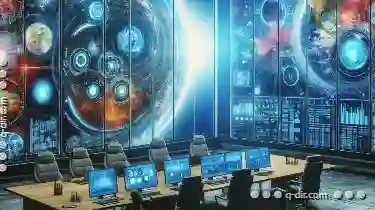This seemingly inconsequential part of the user interface has become a canvas for experimentation, particularly as designers grapple with how best to ...
 organize and present information. In this blog post, we'll delve into the history, purpose, and various implementations of the "View" menu in browser address bars, exploring both its utility and the ways it can be frustrating or enlightening depending on the design choices made by developers and engineers. In the vast and ever-evolving world of digital interfaces, one aspect that often goes unnoticed is the humble "View" menu in the address bar of web browsers.
organize and present information. In this blog post, we'll delve into the history, purpose, and various implementations of the "View" menu in browser address bars, exploring both its utility and the ways it can be frustrating or enlightening depending on the design choices made by developers and engineers. In the vast and ever-evolving world of digital interfaces, one aspect that often goes unnoticed is the humble "View" menu in the address bar of web browsers.1. The Purpose and Functionality of the "View" Menu
2. Traditional Implementation: A Dull Duty for the Menu Button
3. Modern Attempts: Adding a Layer of Visual Flair
4. The Art of Minimalism vs. Information Overload
5. Interoperability Challenges: Browsers vs. Operating Systems
6. User Experience and Accessibility Concerns
7. The Future of the "View" Menu: Innovation and Standardization
8. Conclusion: Navigating Through Design Choices
1.) The Purpose and Functionality of the "View" Menu
The primary function of the "View" menu is to provide users with quick access to various settings and options that affect how a webpage is displayed, such as enabling or disabling features like JavaScript, zooming in or out, toggling developer tools, etc. This menu allows users to tailor their browsing experience without having to navigate through multiple menus or settings pages.
2.) Traditional Implementation: A Dull Duty for the Menu Button
Traditionally, the "View" menu was a simple dropdown containing options like "Zoom," "Page Source," and perhaps some browser-specific settings. This implementation was functional but lacked the visual flair that characterizes modern UI design. Users were expected to be familiar with these features since they had been part of browsers for decades.
3.) Modern Attempts: Adding a Layer of Visual Flair
In recent years, there has been an increasing trend in adding visual elements and animations to the "View" menu. For instance, some browsers use animated icons that represent each option, making it more engaging visually without cluttering the interface excessively. This shift aims to make the navigation clearer by providing immediate feedback through graphical cues rather than just text labels.
4.) The Art of Minimalism vs. Information Overload
One major debate in modern design is between minimalism and information overload. While some argue that adding too many visual elements can overwhelm users, others believe that a clean yet informative interface enhances usability by providing quick insights without cluttering the screen with unnecessary options. For example, Opera's implementation uses minimalist icons that are both clear and aesthetically pleasing.
5.) Interoperability Challenges: Browsers vs. Operating Systems
The interoperability between different browsers can be a significant issue when it comes to the "View" menu. While some browsers like Firefox or Chrome provide extensive customization options, others may offer limited features that are difficult to extend due to proprietary software restrictions. This lack of standardization leads to frustration among users who expect similar functionality across platforms.
6.) User Experience and Accessibility Concerns
The usability of the "View" menu can be affected by its accessibility for users with disabilities, such as those using screen readers or navigating through keyboards only. Some implementations may not comply with web standards like ARIA (Accessible Rich Internet Applications) which could make them less friendly to all users, including those with visual impairments.
7.) The Future of the "View" Menu: Innovation and Standardization
Looking ahead, there's a need for innovation in this space without losing sight of standard usability practices. Developers should aim to create interfaces that are both aesthetically pleasing and highly functional, ensuring they remain accessible to all users. Additionally, there is an opportunity to innovate by introducing AI or machine learning features that can suggest settings based on user behavior, thus personalizing the browsing experience.
8.) Conclusion: Navigating Through Design Choices
The "View" menu in the address bar may seem like a small part of the digital landscape, but it's clear from this exploration that there are significant design considerations at play. From traditional implementations to modern attempts at visual flair and interactive elements, each decision impacts user experience and accessibility. As technology advances, we should aim for a balance between innovation and standardization in how browsers present these settings to users, ensuring that the interface remains intuitive and inclusive.

The Autor: / 0 2025-03-07
Read also!
Page-

The Future of File Extensions
From personal documents to large project files, knowing how to organize and categorize these files efficiently is crucial for productivity and ease ...read more

The Ghost in the Machine: File Explorer's Enduring Legacy.
Among the myriad tools designed to tame this chaos, one stands out as an icon par excellence-File Explorer. This seemingly simple application has ...read more

Quad-Pane: The Ultimate Control Center
One innovative approach to managing multiple data streams and applications is through the use of quad-pane views. This article delves into what makes ...read more